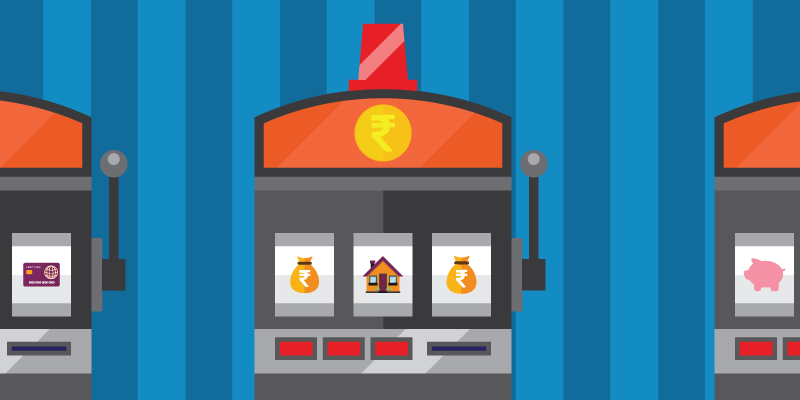Sometimes, taking that risk on your two wheeler right when it’s about to pour works out. Of course, it’s best to be prepared with your raincoat. An expensive loan could work the same way for you.
As long as you plan your repayment in a way that you will not lose much money as interest. That’s how these two smart loan takers, Ravi and Firoz, handled it.
Personal Loans
Ravi is all set to start his dream project, the franchisee of an advertising agency. But he needs to raise Rs.10 lakhs for the franchise fee and setting up the business. Being a newbie in the world of entrepreneurship, Ravi knows that it is difficult to get a business loan. The only he can raise the funds is through a personal loan.
Ravi got an offer from his bank for a personal loan of Rs.10 lakhs at 18% interest.
Ravi’s friends discouraged him from taking a personal loan. The high interest outflow was their concern. But Ravi was had a clear plan of how to manage the loan without losing much money.
If Ravi takes loan of 10 lakhs for a 5 year tenure, he will have to repay Rs.15,23,230.
So here’s how Ravi plans to repay the loan repayment:
Ravi is expecting Rs.1 lakh as monthly profit from his new business from the second month onwards. He has planned to use a good portion of his income to pay off the loan within a year.
Ravi’s wife is employed, and makes Rs.50,000 per month. They can easily manage their day to day expenses as well as investments with this income, if they follow planned spending for a year.
Ravi plans to schedule his loan repayment in a way that he repays Rs.90,000 every month from the second month, instead of the regular EMI of Rs.25,393. In this way, he could close the loan in just 14 months, and the interest outflow will be only Rs.1,15,018. He can save Rs.4,08,212.
He requested the bank to give him the option of an offset loan account, where he can link his personal loan to a current account and make bulk payments anytime he wishes. This also saves him from any possible restrictions set by the bank for making additional payments, as well as additional charges on making personal loan pre-payments.
Ravi decided to take a loan for 5 years and opt for the offset mode over a loan over 12 months as he gets the freedom to make additional payments as he wishes.
As Ravi is just starting out with his business, he does not have a comfort zone of a monthly pay cheque, unlike a salaried person. So, if he is faces a blow off in any of the months, and is unable to make the payment on time, his loan will default. This may impact his overall financial life as well as his credit score. This is the reason a 12 month tenure does not make sense for his situation.
In this way, Ravi is trying to make the best out of the costly personal loan.
Credit Card loans
Do you know that the balance transfer you are opting on your credit card is a loan? Yes, it is. With a careful planning you can make the best out of this too as did by Firoz.
Firoz had an outstanding amount of 1 lakh on his credit card. The card company contacted him with an option to convert it to an easily repayable EMI option on card at just 2% per month. This would mean Firoz needs to pay only Rs.9,456 per month as EMI.
But Firoz’s friend warned him not to go for this option as he would be paying back Rs.1,13,472 and a processing fee of Rs.1000. Instead, he was advised to go for a balance transfer option with his second card.
Firoz was of the opinion that the balance transfer only shifts his dues from one card to another and does not reduce his liability. Most people would agree with him.
But in fact, with good planning and a good offer, balance transfer can be the best option to get out of debt.
Ravi enquired with the second card company and got an offer to transfer his existing card dues to the second card with a 45 day interest free period and zero processing fee. With careful planning of finances and expenses, Ravi could raise Rs.1 lakh within 45 days and settle the borrowed money with the second card without paying a single extra penny.
All you need to do here is search well to know the options around before picking one.
When should you consider costly loans?
You can consider costly unsecured loans under the following circumstances:
- When you have no other way left for raising funds
- If you have a clear plan about making the repayment
- If you are fully aware of the costs involved in it and have ways to offset the loss incurred
- If you can afford a quick repayment or a shorter tenure (within 24 months)
When not to consider costly loans?
One should not consider costly loans under the following conditions:
- Without exploring all possible loan options and best rates
- Without having a clear plan for repayment
- Never fall into the luring offers getting from banks and card companies, especially when you are in financial distress
Loans can be your good friend at times of financial needs, if you are having a careful planning and awareness of its consequences.
